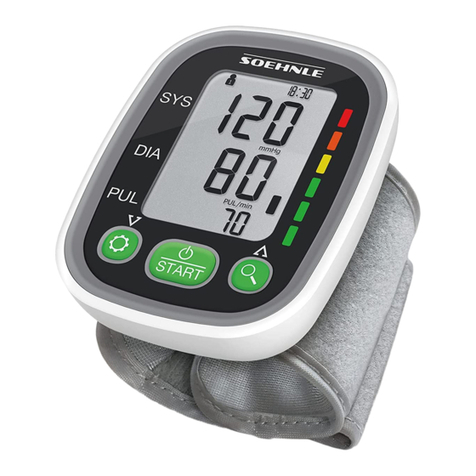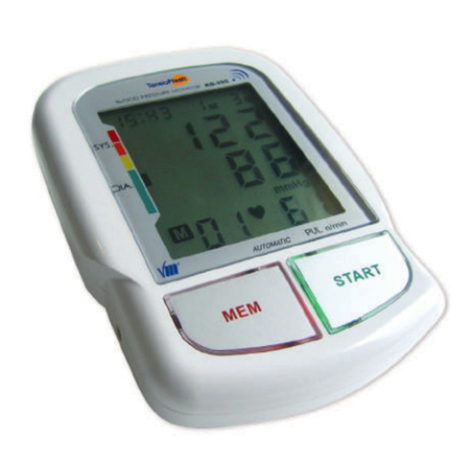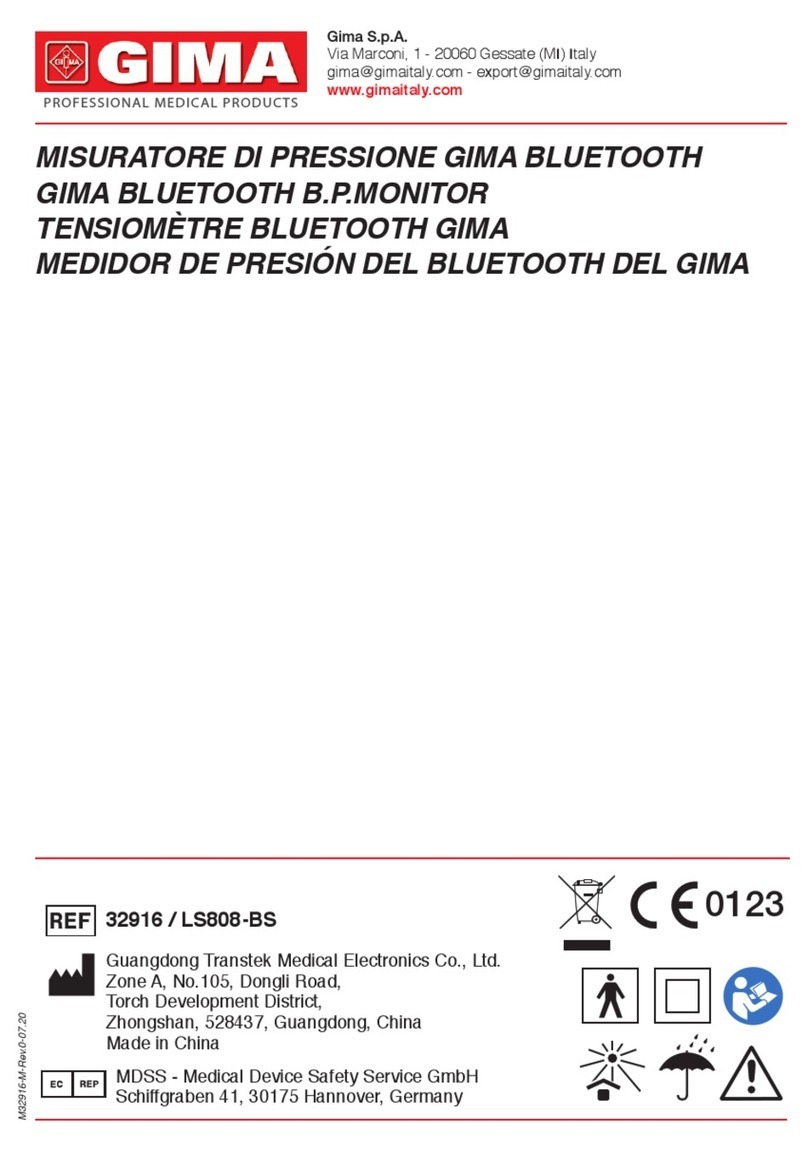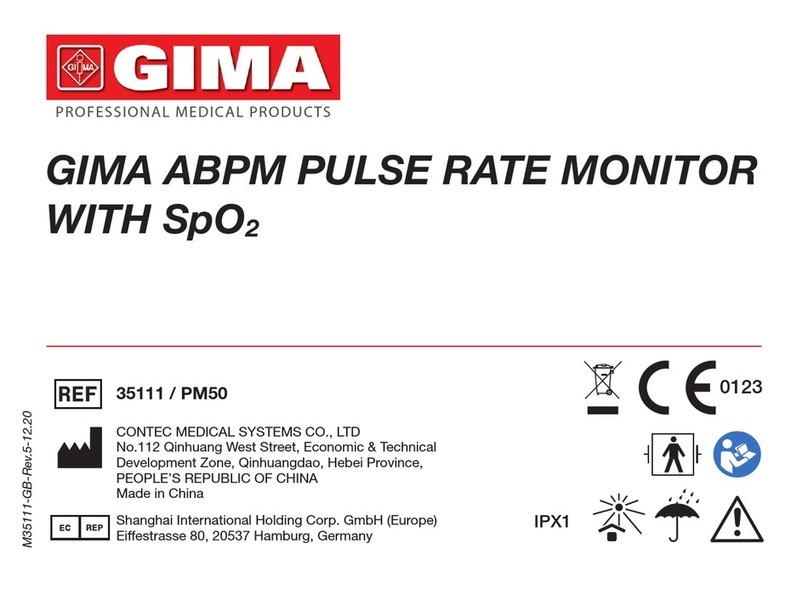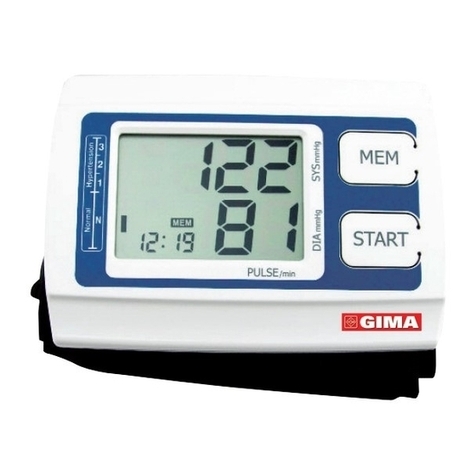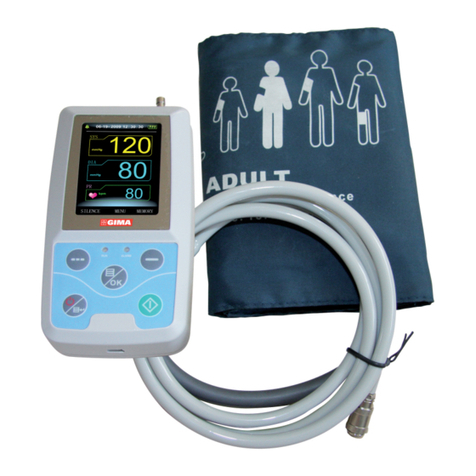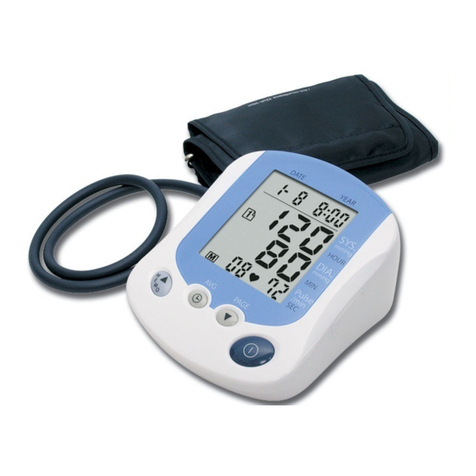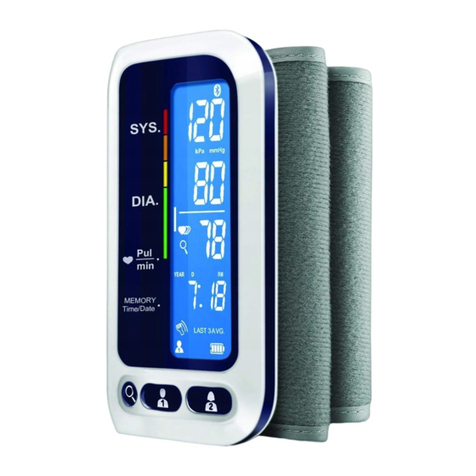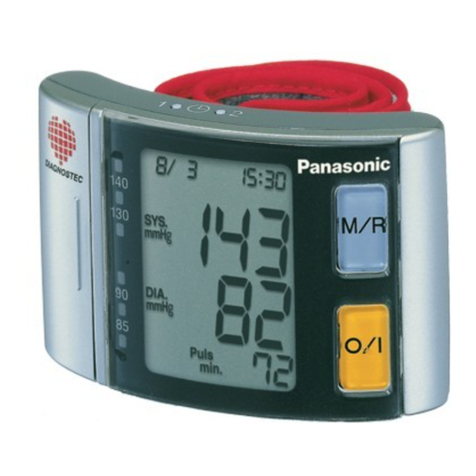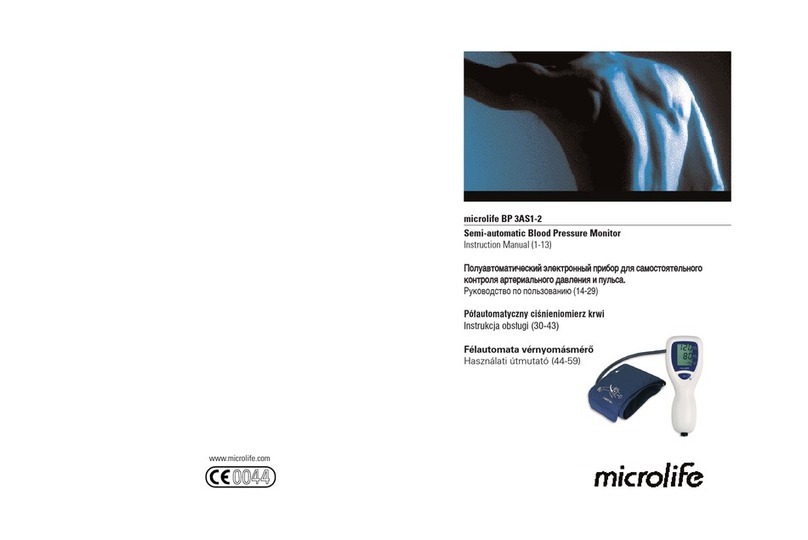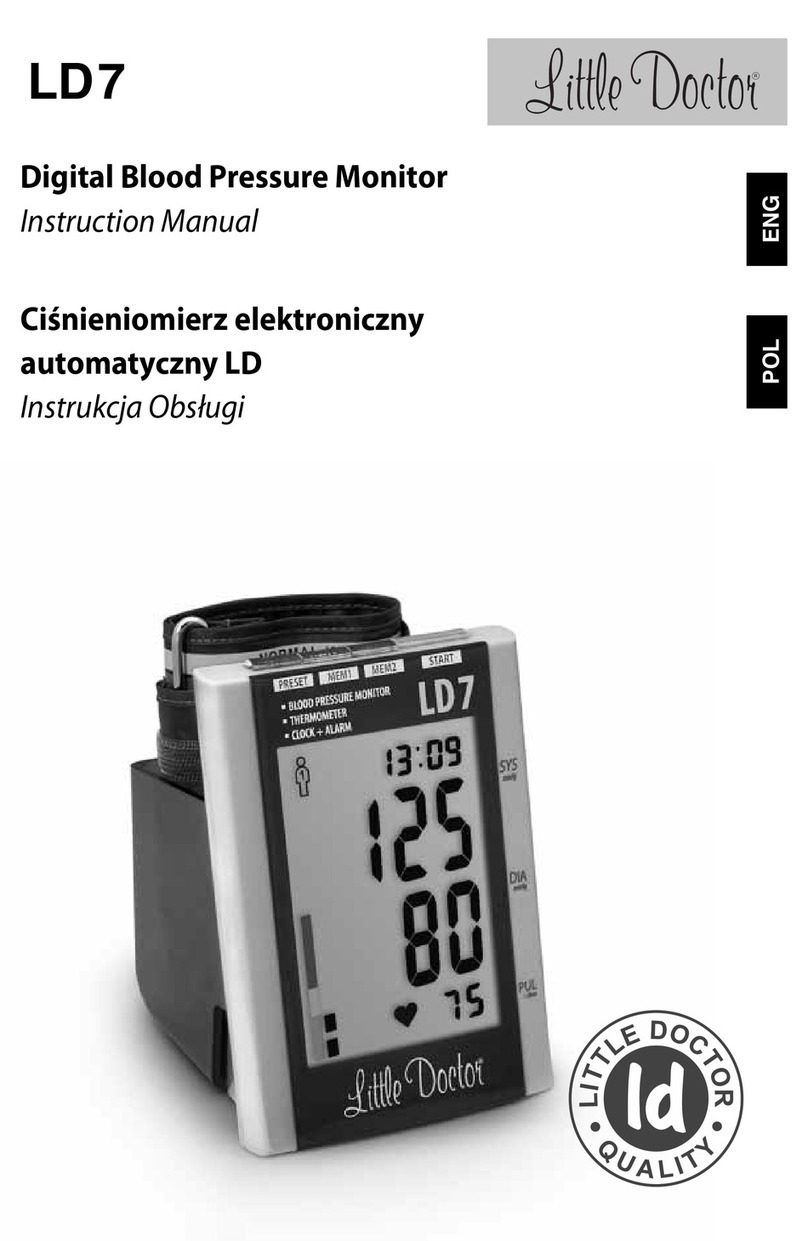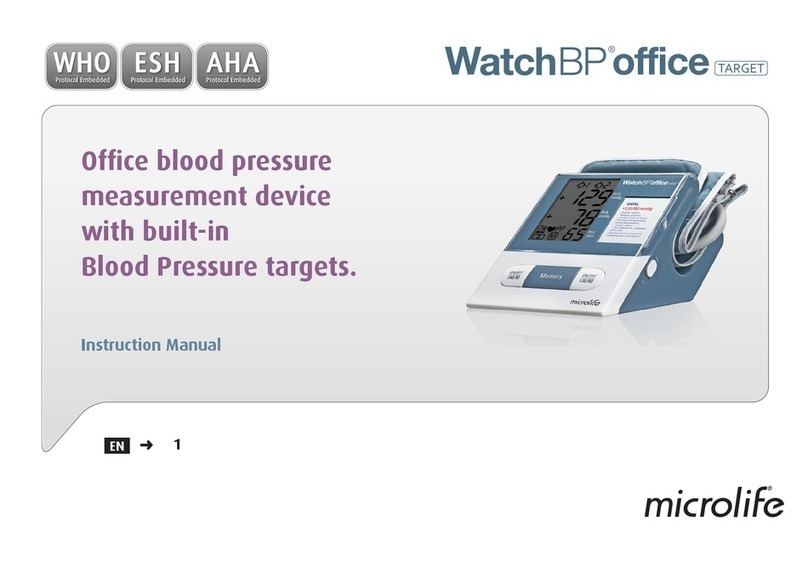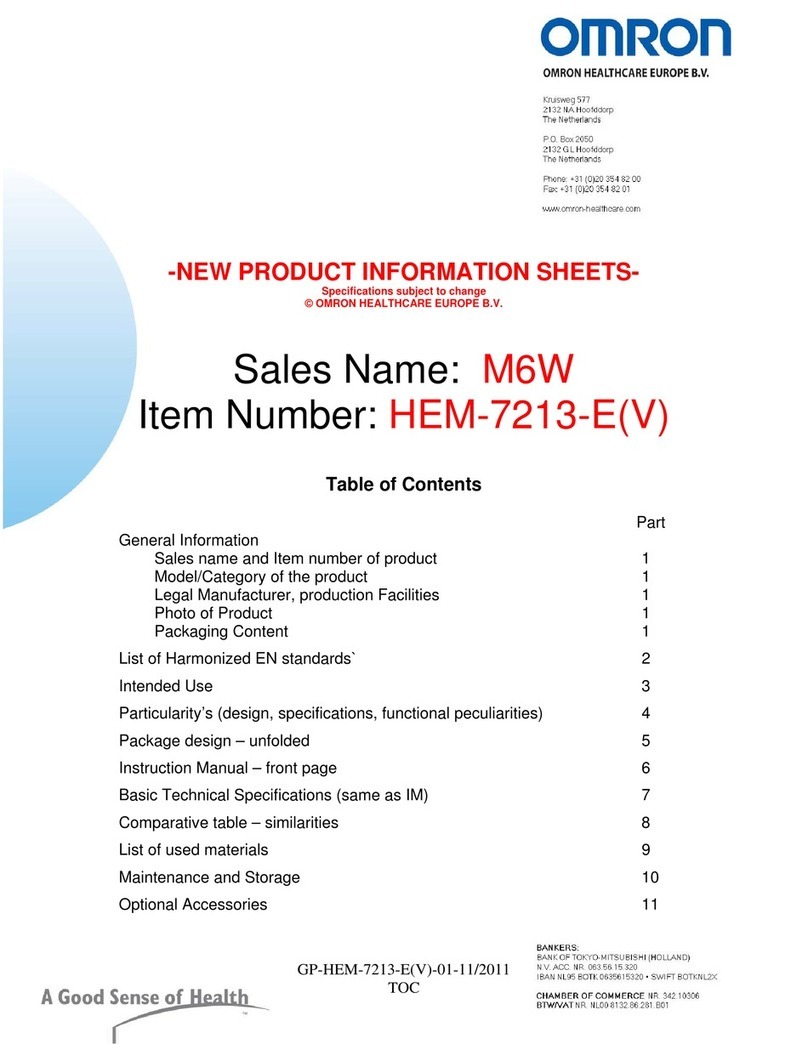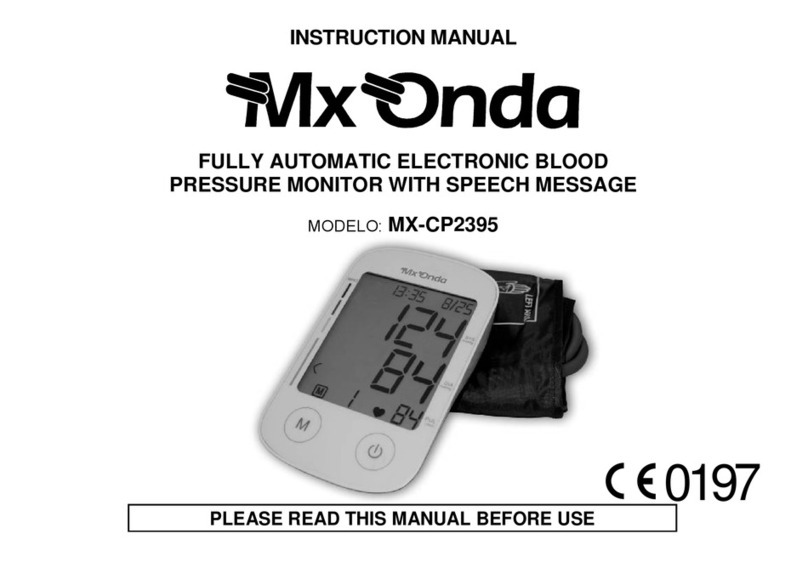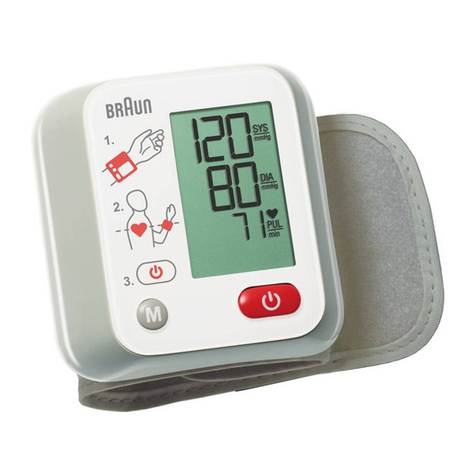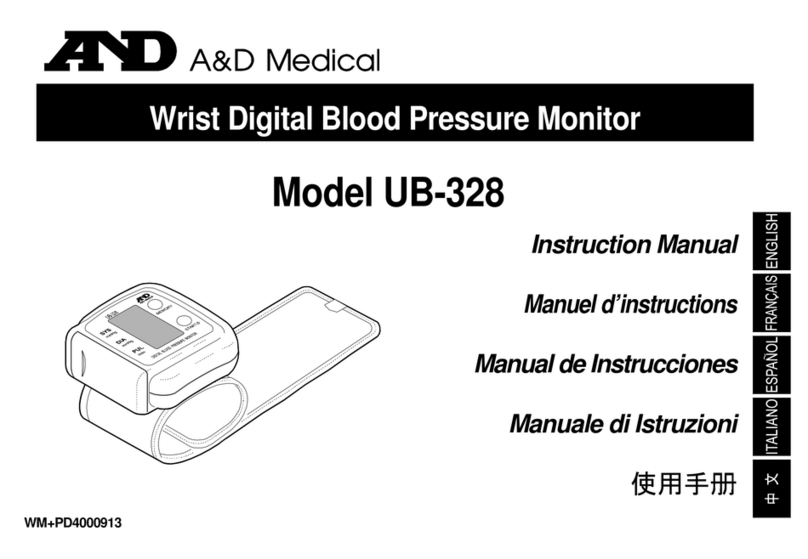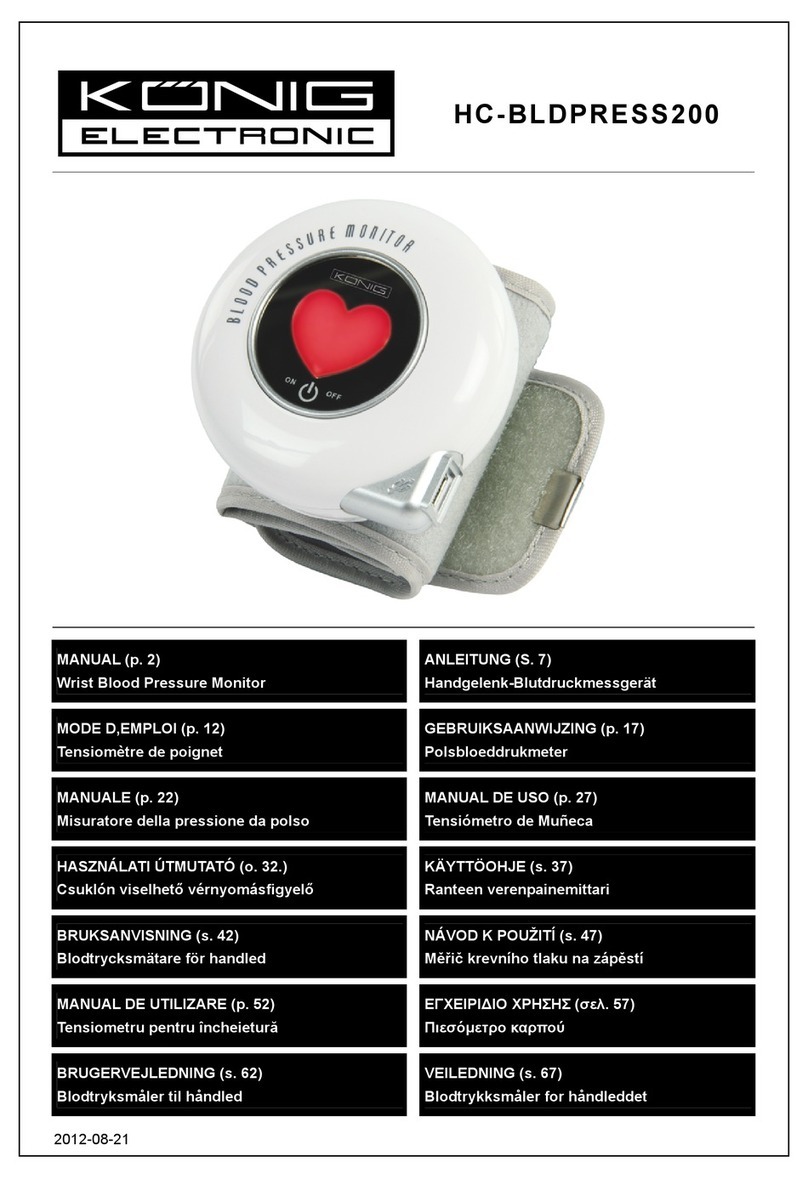
24
5. Measuring on same arm for each measurement.
6. Please always relax at least 1 or 1.5 minutes between measurements
to allow the blood circulation in your arm to recover. Prolonged over-ina-
tion (cuff pressure exceed 300 mmHg or maintained above15 mmHg for
longer than 3 minutes) of the bladder may cause ecchymoma of your arm.
7. Consult your physician if you have any doubt about below cases:
1 The application of the cuff over a wound or inammation diseases;
2 The application of the cuff on any limb where intravascular access or
therapy, or an arterio-venous (A-V) shunt, is present;
3 The application of the cuff on the arm on the side of a mastectomy or
lymph node clearance;
4 Simultaneously used with other monitoring medical equipments on the
same limb;
5 Need to check the blood circulation of the user.
8. This Electronic Sphygmomanometers is designed for adults and should
never be used on infants or young children. Consult your physician or other
health care professionals before use on older children.
9. Do not use this unit in a moving vehicle, This may result in erroneous meas-
urement.
10. Blood pressure measurements determined by this monitor are equivalent to
those obtained by a trained observer using the cuff/stethoscope ausculta-
tion method, within the limits prescribed by the American National Standard
Institute, Electronic or automated sphygmomanometers.
11. Information regarding potential electromagnetic or other interference be-
tween the blood pressure monitor and other devices together with advice
regarding avoidance of such interference please see part ELECTROMAG-
NETIC COMPATIBILITY INFORMATION.
12. If Irregular Heartbeat (IHB) brought by common arrhythmias is detected
in the procedure of blood pressure measurement, a signal of ‘(♥)’will be
displayed. Under this condition, the Electronic Sphygmomanometers can
keep function, but the results may not be accurate, it’s suggested that you
consult with your physician for accurate assessment.
There are 2 conditions under which the signal of IHB will be displayed:
1 The coefcient of variation (CV) of pulse period >25%.
2 The difference of adjacent pulse period≥0.14s, and the number of such
pulse takes more than 53 percentage of the total number of pulse.
13. Please do not use the cuff other than supplied by the manufacturer, other-
wise it may bring biocompatible hazard and might result in measurement
error.
14. The monitor might not meet its performance specications or cause
safety hazard if stored or used outside the specied temperature and hu-
midity ranges in specications.
ENGLISH


